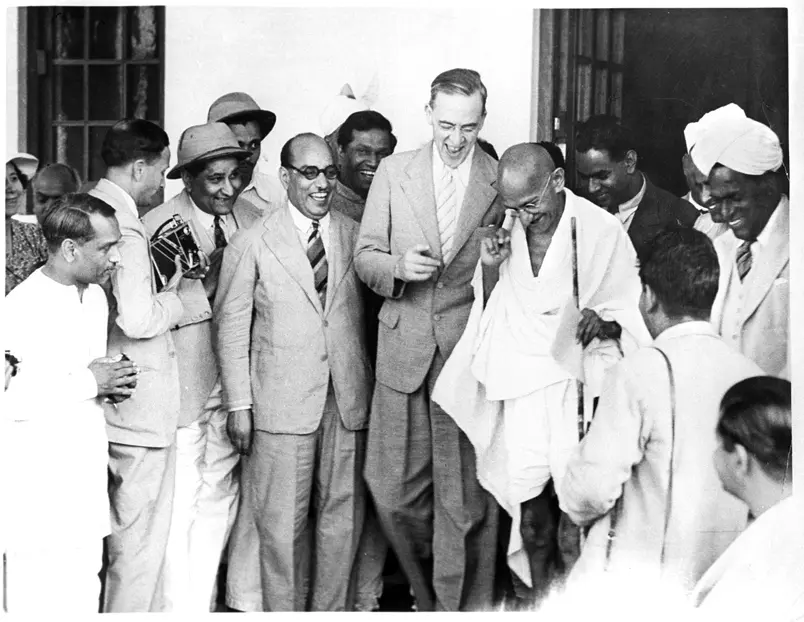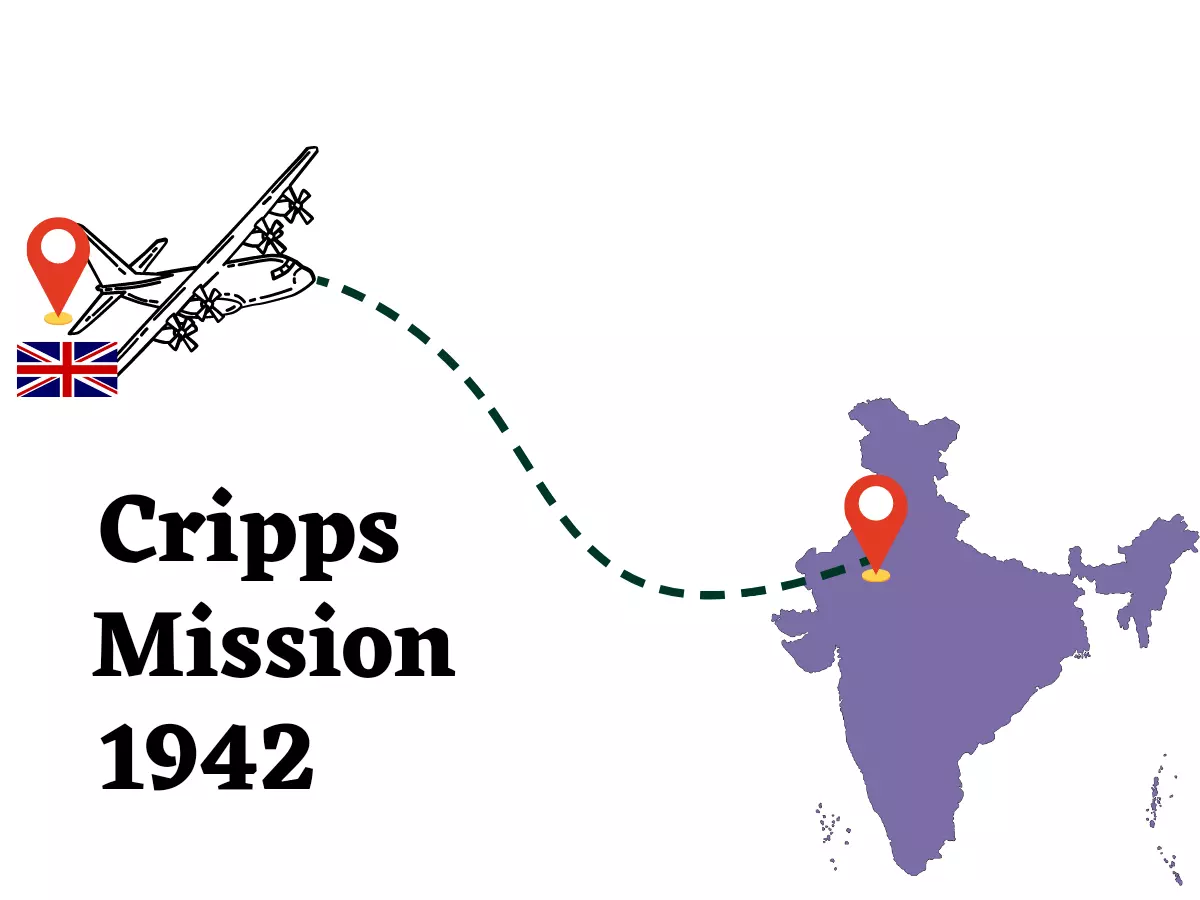In March 1942, amidst the backdrop of World War II, the Cripps Mission, led by Stafford Cripps embarked on a crucial journey to India with constitutional proposals. The primary aim was to secure Indian support for war effort against the looming threat of Japanese invasion. Stafford Cripps, a prominent figure in British War Cabinet and a left-wing Labourite sympathetic to the Indian national movement, played a pivotal role in shaping the proposals.
Cripps Mission – Background
Japan’s Advance and British Pressure
The Eastern borders of India faced a pressing danger as Japan extended its reach, culminating in the fall of Burma. The urgency for Indian support became evident, with the Viceroy Lord Linlithgow declaring India a war party in the British Empire without prior consultation, leading to significant unrest.
Global Dynamics and British Imperatives
Under pressure from the US and other Allied leaders, Britain sought to implement colonial policies in India and secure Indian participation in the war effort. This necessitated the dispatch of the Cripps Mission to India.

Reasons for Cripps Mission
The British suffered setbacks in South-East Asia, intensifying the need for Indian cooperation. Allies such as the United States, the Soviet Union, and China pressed Britain to garner Indian support in exchange for complete independence after the war.
Cripps Mission – Main Proposal
The cornerstone of Cripps Mission’s proposals was formation of an Indian union with Dominion status. This union would have the freedom to determine its relations with the Commonwealth and international organizations like the United Nations. However, certain aspects, such as the Indian defense sector remaining under British control and the preservation of the governor general’s powers, raised concerns.
Constitutional Framework
A constituent assembly was proposed to draft a new constitution, with a blend of elected members and nominations by the Princes. The British government would accept the new constitution under specific conditions, allowing provinces to have their own constitution and negotiating treaties for the transfer of power.
Cripps Mission – Significance
Empowering India in Constitutional Affairs
One significant aspect was the emphasis on placing the constitution solely in Indian hands, a departure from the ‘primarily’ in Indian hands as stated in the August Offer. The constituent assembly was given a concrete plan, and the possibility of separate constitutions for provinces was outlined, setting a blueprint for India’s partition.
Comprehensive Administration for Indians
The proposals granted Indians a substantial share of administration during the interim period and offered the flexibility for Free India to withdraw from the Commonwealth.
Failure of Cripps Mission
Propaganda Tool and Divergent Perceptions
Despite the grandeur of the proposals, the Cripps Mission failed to satisfy Indian nationalists. It was perceived by some as a mere propaganda tool for the US and China. The British found the proposals too radical, while the Indian National Congress (INC) viewed them as overly conservative.
Diverse Opposition and Inherent Flaws
The INC, Muslim League, Hindu Mahasabha, and Liberals all opposed the Mission for various reasons, ranging from concerns about minority rights to objections against the states’ right to secede. The lack of support from key British figures and Cripps’ rigid stance further complicated the negotiations.
Unresolved Ambiguities
Ambiguities in the proposals, such as the undefined procedure for joining the union and the issue of the viceroy’s veto, added to the impasse. Gandhi famously referred to the scheme as a “post-dated cheque.”
Causes of Rejection by INC and Muslim League
INC’s Concerns
The INC rejected the dominion status, representation of princely states, and the right of provinces to secede. The absence of a plan for immediate power transfer and a real share in defense added to their discontent.
Muslim League’s Criticisms
The Muslim League criticized the concept of a single Indian Union, objected to machinery for forming a constituent assembly and believed the proposals denied Muslims the right to self-determination and the establishment of Pakistan.
Conclusion
Stafford Cripps left India amidst widespread frustration, triggering Quit India Movement led by Congress in August 1942. The movement marked a significant phase in India’s struggle for independence. The failure of the Cripps Mission highlighted intolerable nature of the existing situation and fueled the resolve for a final assault on imperialism.
FAQs
What did Mahatma Gandhi say on the Cripps Mission?
Mahatma Gandhi expressed disappointment, considering the proposals a “post-dated cheque” and deeming them “too little, too late.”
When was the Cripps Mission sent to India?
The British government dispatched the Cripps Mission to India in 1942.
Why did the Muslim League reject the Cripps Mission?
The Muslim League objected to the concept of a single Indian Union, believing it denied Muslims the right to self-determination and the establishment of Pakistan.
Other related posts:Understanding ‘Hind Swaraj’: A Comprehensive Guide to Gandhi’s Vision



